Planning isn’t just about the big showcase event with your customer where all the execs are wheeled out once or twice a year for a full on session that can last hours and, sometimes, even days.
Practitioners of BUYERnomics are planning constantly. For meetings, conversations. Even telephone calls. In fact once you break it down it’s amazing how much of your work day is comprised of planning. But equally so, it’s surprising how little planning goes into these activities. Take telephone calls for instance. How many times have you called a customer or prospect with only a vague notion of what you want to achieve or how you are going to achieve it? The result is that you get off the call frustrated that you didn’t achieve your outcome and possibly left the client feeling puzzled or, worse still, annoyed.
We use the GROW model to prep for calls and it isn’t onerous. At most it will only take 5 minutes of your time, often less and the payoff is substantial; focused calls with definite outcomes. All you need is a blank sheet of paper and the following 3 tips:
1. Preparation, preparation, preparation
Quite simply, every time you make a call spend 2 to 3 minutes prior to the call doing the following:
Firstly decide what your GOAL is for the call. Write it down. The key point here is that you should only ever have one GOAL. Secondly, put the call into your client’s context. Not yours, which is often the default when you make a call. It can often be all about what you want rather than what the client wants. To avoid doing this all you have to do is understand their REALITY. Have a quick think about your client’s situation. If you maintain a client profile, give it a quick read. What does it reveal? What is missing? What do you know? What do you need to know? Write this down beneath the GOAL.
Finally, think of one or two key questions to ask the client based on your understanding of the REALITY and your GOAL. We call it OPTIONING. Remember to write them down beneath the REALITY. But importantly ensure you just have one or two questions. This can be difficult. As everyone knows, asking loads of questions is easy. However it’s not about quantity. It’s all about quality, especially on the phone where time is limited. However the GOAL and the REALITY will focus your questions and force you to concentrate on asking questions that will achieve the Goal but in your client’s context.
2. On the call
Once you get on the call, have your sheet in front of you as a guide. Don’t mention GROW. Just use it. You’ll find yourself leading with the questions because they will help you meet your GOAL. Hopefully they’ll account for the client’s context. If not, you’ll find out soon enough through their answers but that’s the point.
Finally if you get them answered, agree a WAY FORWARD which will hopefully be confirmation that your GOAL is achieved or at least confirmation there is movement towards the GOAL.
3. After the call
After the call you’ve still got a little bit of work to do. If you have a profile, update it. Then just follow up with a quick e-mail. To structure it so it is short and concise, use GROW.
That’s it. Speed planning. It’s simple. Its quick. And it delivers results.
When will you next practice speed planning?


